When I was thinking about this year-in-review column, I asked myself: What I will remember from 2019? What impact did 2019 have on me as a person, or those around me? I came up with three things I will be remembering and trying to justify in my mind for years to come: Steffen Peters talking about his depression; Michael Barisone shooting a student; and George Morris’ SafeSport conviction.
This column originally appeared in The Chronicle of the Horse, it is re-produced with permission (and thanks!). If hard-hitting controversial views offend you, please do not read this piece.

JEREMY STEINBERG – Photo – Rebecca Ashton
With 2019 behind us and this year just beginning, the fanfare is going to be focused on the 2020 Olympic Games in Tokyo.
On a riding level, there were many small things—rule changes, changes to CDI structure in regard to World Cup qualifying, people shuffling barns, and trainers getting ready for 2020. There were the U.S. Dressage Finals, masterclasses given, people hurt, people married, and new horses just starting out their careers. The top riders in Europe continued to be top, and the U.S. contingent is perpetually gearing up to give them a run for their money.
The few who can afford it, went on the horse swap-and-buy extravaganza tour, trying to get on an Olympic team via buying a horse the year before the Games. That is one of my biggest pet peeves—the riders who have fame based on someone else’s training. It isn’t the same journey as training your own horse, and those riders miss out on the art, and the horse as a whole, when they’ve focused on the competition as the end result.
The human aspect of the sport is far more interesting to me than the medals or placings, as are the stories of the people who work behind the scenes to no fanfare at all. Those stories are the ones I wish we celebrated more, as their impact, both within the industry and on us as people, is far more influential on how the sport and art evolves than any medal or award.
When I was thinking about this year-in-review column, I asked myself: What I will remember from 2019? What impact did 2019 have on me as a person, or those around me? I came up with three things I will be remembering and trying to justify in my mind for years to come: Steffen Peters talking about his depression; Michael Barisone shooting a student; and George Morris’ SafeSport conviction.
A LIFELONG STRUGGLE
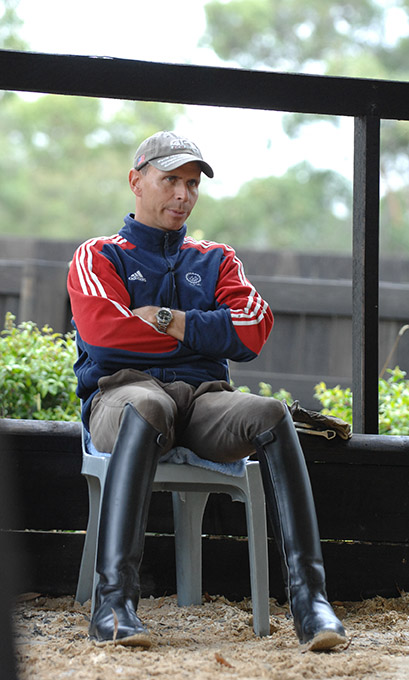
Photo – Roslyn Neave
The interview with Steffen on dressage-news.com, where he talked about his depression, made the rounds through the community, and there were many different takes on it. Here you have a man who, to those looking in, basically has everything he wants, or has dreamed of having, but he can’t get the motivation to ride or get up. I heard and read how pleased people were that someone in his position came forward to talk about depression, so that other people in the horse world who suffer from the same affliction can feel as if they can also safely share their struggles.
I’ve also dealt with depression, the symptoms, the effects on the people around me, the effect on my horses,and the side effects of various medications for nearly 30 years. Depression, suicide, moral despair and the complete lack of ability to get up or do anything is more common than we like to admit, and those issues usually last a lifetime, not a year.
I feel bad for anyone who has to deal with the inner torment of what depression or any mental health problem can do, and I feel bad for Steffen, but I also feel bad for people less privileged than he is, who don’t have the resources, the friendships and people in their lives, and who continue to struggle.
My own depression has come in waves for my entire adult life, starting in my late teens. It has come and gone throughout the years, wreaked havoc on my life in many ways, and had me bedridden, as I know it has with others. I’ve heard stories from people, both in the horse world and out, about their own struggles. I’ve had friends commit suicide, become hospitalized, or ruin their lives because they can’t get up as the figurative weight on their chest is too much. I and those I know have never hidden that depression or that struggle.
I wish instead of going to an online website to air his experiences with the disease, Steffen could have used his star power to start a program or group to help other riders and trainers who suffer with the same but are less fortunate in their ability to get help or have a support group. Maybe he still will.
I would like to be able to fast-forward the clock 20 years and ask him again in 2040 if he’s still struggling with it and find out how the last 20 years have gone—what he’s done, how he’s dealt with it, and who he’s affected because of it.
That story brought back so many memories of people I’ve known and lost, or who have had a lifetime of suffering. Depression is a strange and silent killer, and my tears and empathy were for the quiet ones who struggle to survive or lose their struggle and go unnoticed.
I feel like in some ways, I am an artist. I teach, I study and I create. I don’t show these days; I just ride my horse for my own betterment, to help keep the depression at bay, and to do what I love. I love creating what I do and am proud of it. Art often comes from pain or the desire to disconnect from discontent and have an outlet for those feelings. Not all art comes from there, but a huge percentage of it does.
That being said, the artists I know—musicians, painters, dancers, riders and so on—all produce and perform their art for different reasons and from different perspectives and socio-economic backgrounds. Equestrian sports draw people in, much like any other self-expressive form of art, as an outlet for some other thing that is unbalanced in their soul. Not everyone comes to art or riding for that reason, but it happens, and it happens a lot.
The artists I know have almost an unworldly empathy and empathic ability. That ability leaves them also somewhat fragile as they take on the problems of the world in various ways, whether they are even aware of that absorption or not. That buildup of collective emotion often becomes a building block for the art itself.
THE UNJUST SYSTEM OF SAFESPORT
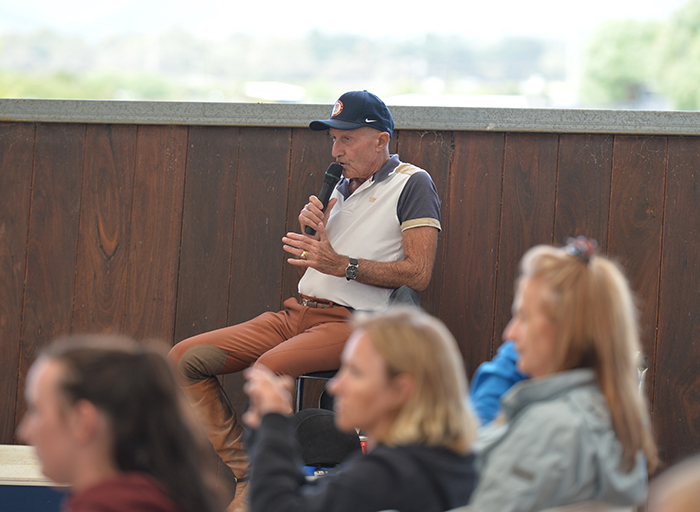
When I first heard about George Morris being banned by SafeSport, I was really taken aback. Instantly I had a flood of emotion go through me, not because I was worried about George, but because I was worried for the world. I worried that we’re losing an exceptional horseman and teacher who has arguably contributed more to show jumping and equitation than anyone else currently living. I worried for his students who he will not be able to teach. But most of all, I worry that his victims are in pain, and that experience has changed their lives for the worse. I worry their pain will lead them into the depression and guilt that these kinds of things often lead to.
I have a great deal of empathy for anyone affected by George’s conviction, whether in support or against him, connected to him or not. It’s hard to see our idols fall, and as a victim, it can be even harder to take our idols down. Many people in the community told me they knew about him, and there had been “whispers” for years, and many were in shock and disbelief. Some came out in support of him, while others were condemning him. I have no condemnation nor support as I have no first-hand knowledge of his dealings and have only known him as a horseman, rider and teacher, and in that regard I have a lifetime of respect for him.
What I don’t have respect for is the flawed SafeSport system that has now contributed to the suicides of two people I know of—show jumper Rob Gage and figure skater John Coughlin. I didn’t know either personally, but I know their stories, and both suicides were tied to their lifetime SafeSport bans.
I don’t have respect for an organization that takes away your rights and your ability to earn a living through their aiding and abetting clause. SafeSport has listed under prohibited conduct, that if you as a U.S. Equestrian Federation member ride with a person who has a SafeSport conviction, you are also violating the policy. Basically SafeSport has made George’s ability to teach and work, putting food on his plate and money in the bank, impossible. How is he going to survive, after dedicating his life to horses and our sport? I have to think, if he was convicted by a U.S. court system and put in jail, as it seems the SafeSport conviction would have you understand the severity of his guilt, he’d at least have three meals a day.
Is he going to go back to school, find another job, work in a different field, or is he ruined? I don’t defend his actions; I just believe that if you, as a USEF member who has known George for a lifetime or for 10 minutes, still want to work with him, have a lesson or attend a clinic, you have a right to do so. I find it oppressive and tyrannical that SafeSport can take away that right.
Right now, as a non-USEF member, I could go to George and take a lesson. I could say to myself: I do not know his story or his past; I only know a man who has been kind to me and a horseman I admire. I could and would easily go to him for help and understand that his struggles are his own, not mine to judge. He has not been convicted in a court of law, so personally I could do it.
That would be my own decision to make, not SafeSport’s.
I have been fairly outspoken about SafeSport and not wanting to be a USEF member because of that clause alone, although there are many other reasons as well.
I don’t understand why Barney Ward, who was charged with arranging the killing of horses and eventually plead guilty and was subsequently banned for life from the American Horse Shows Association (the USEF predecessor), was still able to teach and work with horsemen and women in later years, and George is not allowed the same.
Meanwhile, this week while I write this, an independent arbitrator has overturned one of the U.S. Center for SafeSport’s rulings for a lifetime ban on figure skating coach Richard Callaghan, who has multiple allegations against him in the skating world, to the upheaval of the entire skating community. On Dec. 16, the ban was reduced to a three-year suspension, 15 years of probation and 100 hours of community service.
I’m all for protecting children, please don’t get me wrong. I was abused sexually when I was underaged and have had to deal with that torment my whole life, so I agree it is imperative to have a system to protect our children. Ask anyone I worked with, parent or otherwise, while in the position of USEF Youth Coach: I am their biggest advocate and want them safe. I just don’t think SafeSport is the way to go.
I understand USEF needs the funding from the U.S. Olympic Committee, and that abiding by the jurisdiction of SafeSport is a government mandate, but why they are not more vocal in objecting to it is beyond me.
NO ANSWERS AND NO IDEAS
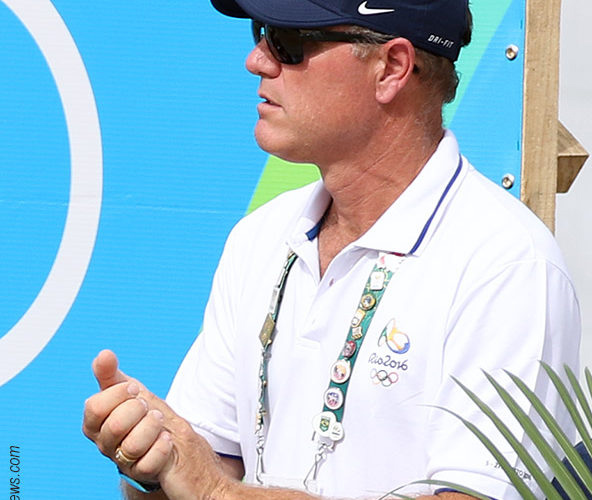
Photo – Kenneth Braddick Dressage News
I remember exactly where I was sitting and what I was doing when a friend of mine texted me to say Michael Barisone had been arrested for shooting someone. I didn’t believe them, but a quick look on the internet had the story right there on all the major news networks. To say I was shocked would be putting it mildly—to say I was in shock might be more correct.
I don’t know Michael well anymore, but I know him well enough. I spent a few weeks with him in San Diego when he was there trying for the World Cup when it was in Las Vegas, and we had a few adventures together. When I offered to haul his horse to Vegas with mine for the invitational Grand Prix, we got to know each other even better since we were locked in the truck together for a six-hour drive.
He talked non-stop the entire time, often criticizing my driving, as well as the other drivers on the Southern California freeways. He told me about all his accomplishments, as he does. He was a huge force, not to mention a huge man who dwarfed the passenger seat of my one-ton truck. I think my groom and friend Taryn Briones, who was in the backseat, put on her headphones and slept most of the drive so she wouldn’t have to listen.
On the way home, Michael, who can’t sit still, made it very clear that if I would like him to drive, he’d be more than happy to, which I took as he really wanted to drive, and I thought it could shut him up a bit if he did as he’d need to concentrate on the road. I let him drive my rig home, but he wasn’t any less talkative.
In San Diego he’d told me of the depression he struggled with over the years. We became friends on that trip and stayed on and off in touch over the next few years. He was literally and figuratively larger than life. He is not for everybody, and I get that—nor am I, so I can relate. He has many flaws, as do we all, and even though over the last decade we haven’t spoken much or even seen each other, I was stunned when I heard about the shooting, and again, I found myself in tears.
My wife came in the room and asked what was wrong, and I was speechless. She had a lot of questions, none of which I could answer. She wanted to know how well I knew him, or the victim, Lauren Kanarek, who I don’t know at all, and then she asked why I was crying. I was crying because I know the amount of anguish you would have to be in to shoot someone is devastating. Whether it was the victim’s pain or Michael’s, I was feeling both.
The next days were strange, to say the least. Everywhere I went, people were asking what happened, how well I knew him, and if I knew Lauren. I read more about it online over the weeks that followed—I just wanted to know what happened and why Michael snapped, if Lauren was going to make it, and how everyone in both their lives was going to proceed.
I worry about Michael’s mental health and what the next few years will bring for him. His life is now permanently changed, as is his victim’s life, and their paths irrevocably altered. I couldn’t believe it had happened, and my heart was crushed that someone I knew could do such a thing.
NEWS IN REAL TIME
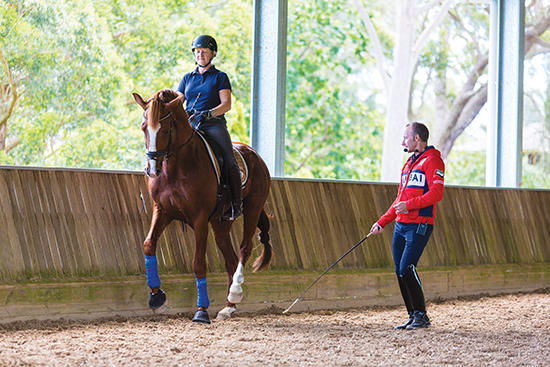
Photo – Rebecca Ashton
I remember getting The Chronicle of the Horse when I was a kid growing up in Woodinville, Washington. It came to our mailbox nearly without fault, every Thursday. I waited in the living room for the mail truck and ran out to get the magazine, usually leaving the rest of the mail in the box for one of my parents to bring in. All I wanted was the magazine, and I wanted it because it had photos of the riders I wanted to emulate, and it was current with all the show results, both local and global.
It was a time when there was no such thing as SafeSport. No horses were in the newspapers, and our horsemen and horsewomen were viewed as role models, not possible predators. It was a time of innocence, for me at least; I had not yet succumbed to my first bout of depression, which nearly ended my life, had not yet been molested, and I’d never had one negative encounter with a horse person.
I lived in awe of the good riders whose pictures hung on my bedroom walls like idols pulled from old issues of Teen magazine. I drove a 1976 Ford truck with a 20-year-old camper on the bed, pulling a two-horse bumper-pull trailer barely large enough to fit a small Arabian. Times were far simpler back then, or at least the ignorance I lived in makes me believe it so.
The news and the internet now bring us all the events as they unfold in real time. Both George’s story and Michael’s were in print in national papers and online on every major and minor news site.
I don’t run to the mailbox anymore to get my issue of the Chronicle; I read it online, and even then I sometimes don’t want to know what’s in it. I don’t want to hear about the horse deal gone bad or the multimillionaire who bought yet another top horse to ruin or make lame in an effort to make a team. I don’t want to hear how the latest 3-year-old just sold at the auction for 1.8 million euros or the latest promotions in the judging world. I don’t like to read about the same top riders over and over, or see the propaganda-ridden press releases that some of these riders pay people to put out for them, but I do continue to read in print and online, every bit of information I can get.
I want to know what happens to George, and if his story is just beginning or ending. I want to know what happens to Michael and where his life takes him. I want to know if he survives being incarcerated and how his friends and family manage, and what their new lives are going to be like. I want to hear about Steffen and what he does to get better, how he picks himself up, and where he goes from here.
I don’t want to know because of gossip or intrigue; I want to know what happens to these people because the emotional impact of these events, in the riding world and outside it, changes us forever. Their combined effect influences us all as a community, and I care deeply about my community, so in turn, I care about them, their stories and their struggles. It’s a circle of life. Their conflicts will be how I remember 2019.
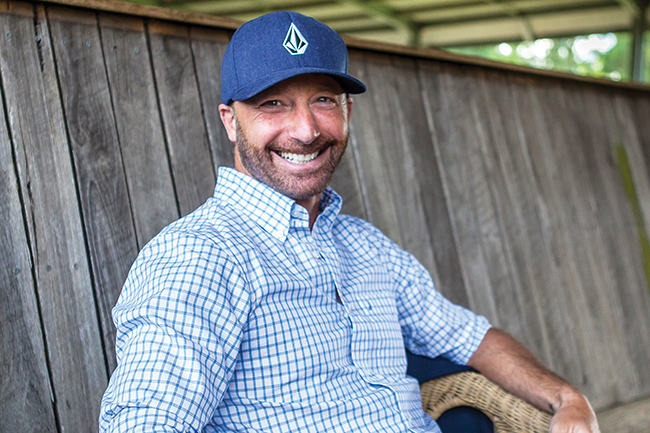
Photo – Rebecca Ashton
JEREMY STEINBERG
Grand Prix trainer and competitor Jeremy Steinberg was the U.S. Equestrian Federation national dressage youth coach from 2010 to 2014. The 1996 FEI North American Young Riders Championships individual dressage gold medalist, he is a former U.S. Dressage Federation Junior/Young Rider Clinic Series clinician. He credits much of his dressage education to the late Dietrich von Hopffgarten, his longtime friend and mentor. Today Steinberg runs a boutique-style training business in Aiken, South Carolina, and travels the country giving clinics. Learn more at steinbergdressage.com.
Want to hear more from Jeremy?

depression has dogged me since age thirteen. Good treatments are out there….it took me a while to find the right doctor and therapy and yes, medication. I hid it for years and it almost killed me. Living horses and riding again like never before. At 64.
Fascinating stuff, thank you for posting this article here. US is one of the few bright spots for me at the moment as my country descends further into oligarchy. I didn’t realize that the Safe Sport ban also prohibited USEF members from riding with the convicted. Interesting stuff, I’m not sure how I feel about that. Definitely agree with Jeremy’s sentiment that anyone convicted of harming horses should also be banned, it’s offensive that is not the case.
What a fabulous articulate piece of writing.
Love this article agree with so much of it, Want to be a better rider and train for that not to win, beaks my heart to see people competing only to win and not to learn and what some will put their horses through for that end